HKJ
Flashaholic
[size=+3]Soshine IFR26650 3.2V 3200mAh (Pink)[/size]
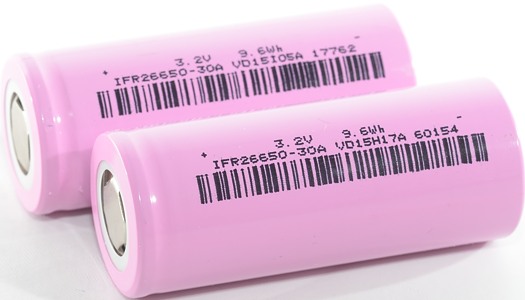
Official specifications:

A LiFePO4 26650 cell, generally this means 3.2V and low capacity.
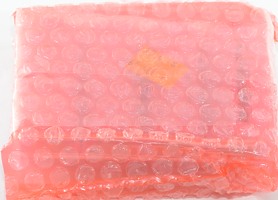
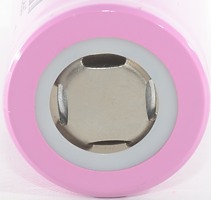
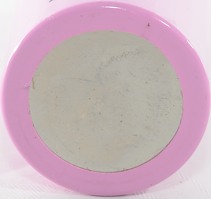
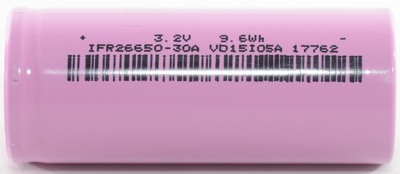
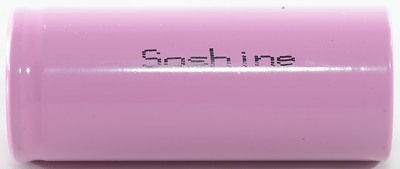
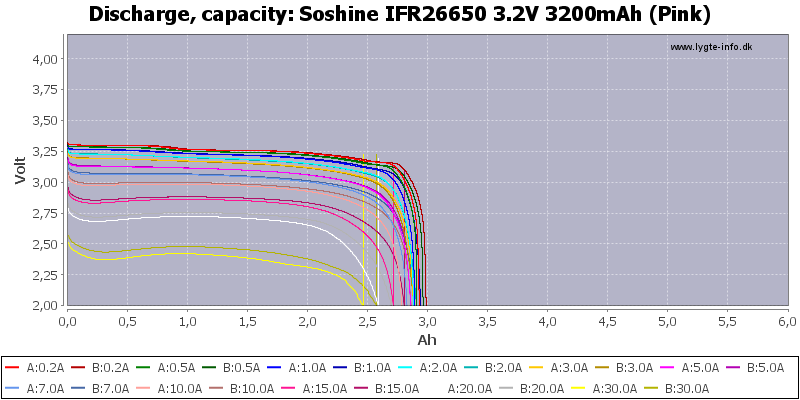
The cells tracks fine. Compared to the usual LiIon the voltage is fairly low, but it stays mostly constant during discharge.
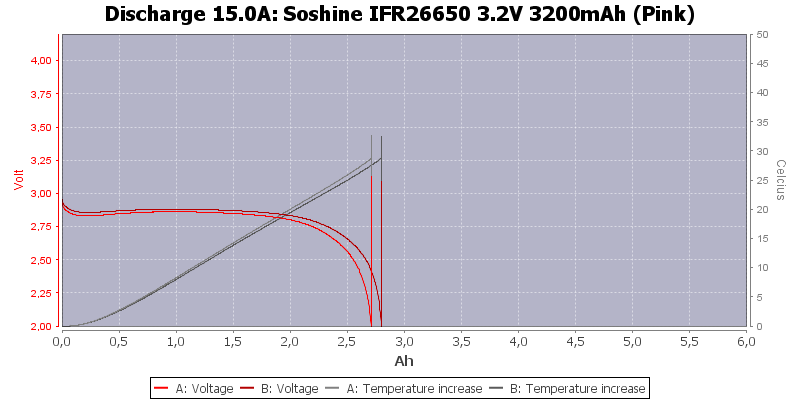
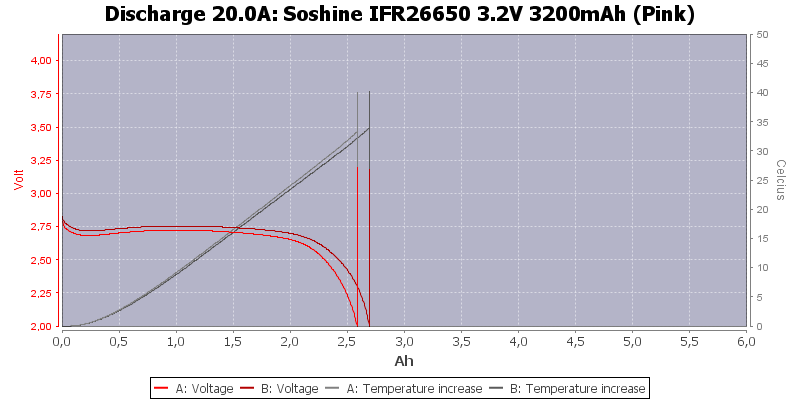
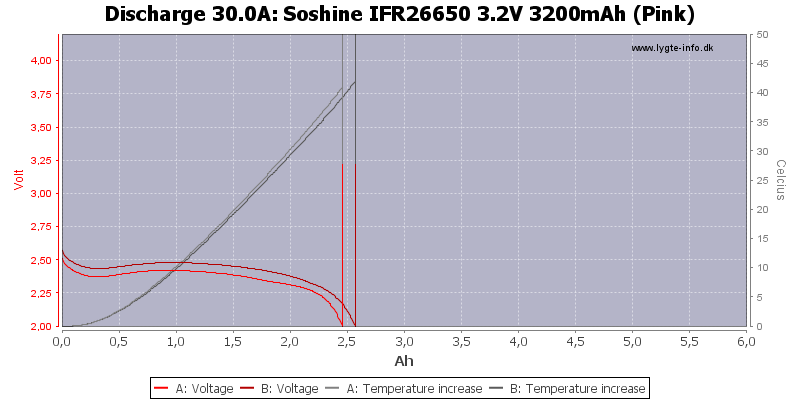
The cells is around 80°C at 30A, this is just at the limit.
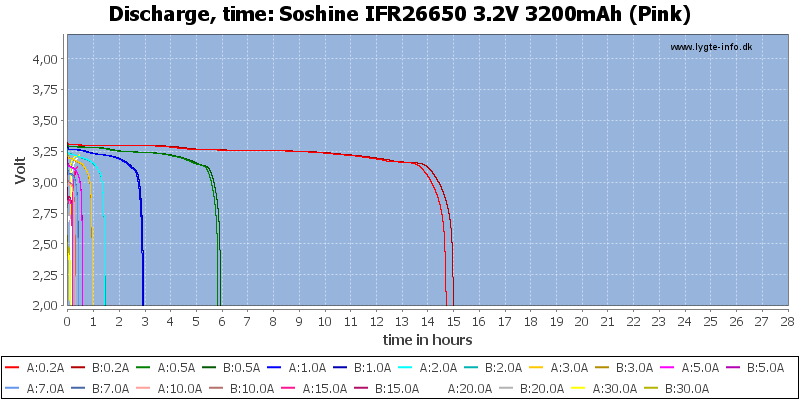
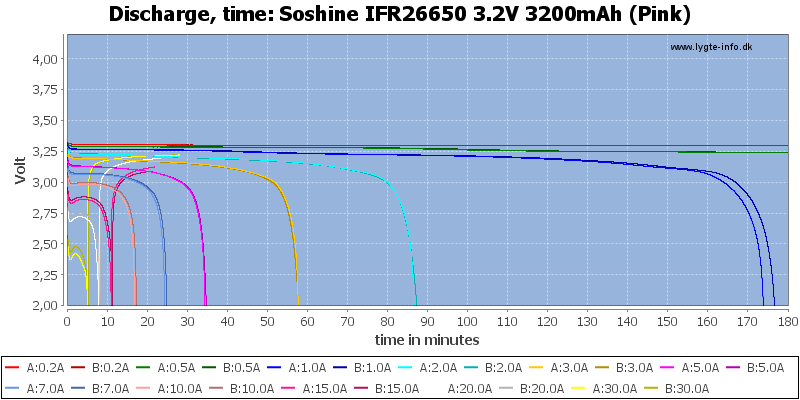
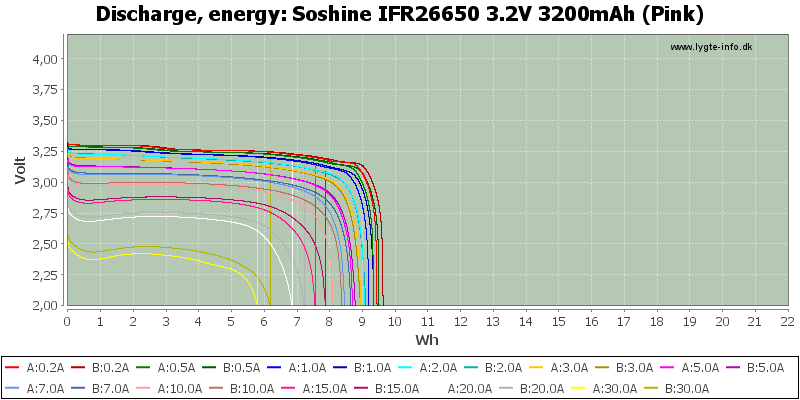
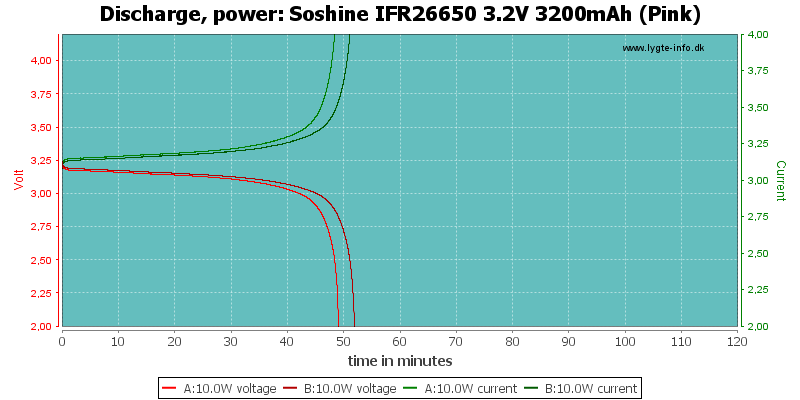
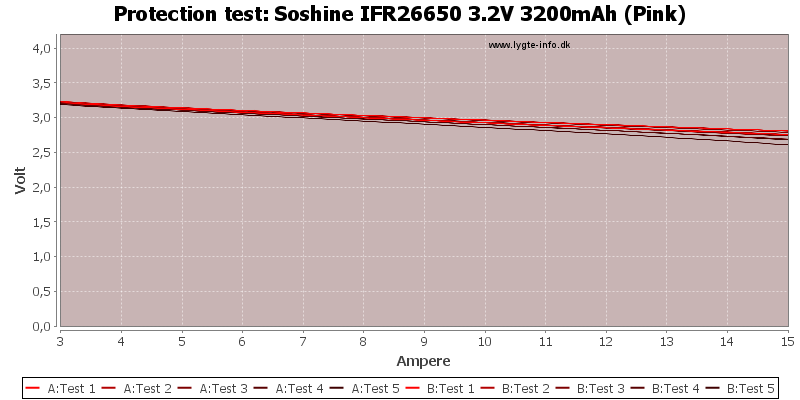
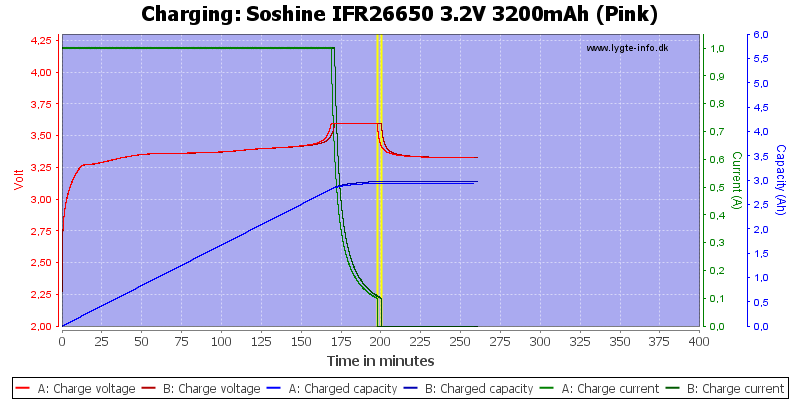
A typical LiFePO4 charge curve.
[size=+3]Conclusion[/size]
The cells looks like good LiFePO4 cells, but a 4.2V LiIon cell in this size can have about double the energy.
[size=+3]Notes and links[/size]
How is the test done and how to read the charts
How is a protected LiIon battery constructed
More about button top and flat top batteries
Compare to 18650 and other batteries
Compare to 26650 and other batteries

Official specifications:
- Battery Capacity (FastTech Tested): 3112.9 mAh
- Battery Capacity (Mfg Rated): 3200 mAh
- Battery Chemistry: LiFePO4
- Battery Feature: Rechargeable
- Battery Form Factor: 26650
- Battery Rated Voltage: 3.2 V

A LiFePO4 26650 cell, generally this means 3.2V and low capacity.






The cells tracks fine. Compared to the usual LiIon the voltage is fairly low, but it stays mostly constant during discharge.



The cells is around 80°C at 30A, this is just at the limit.






A typical LiFePO4 charge curve.
[size=+3]Conclusion[/size]
The cells looks like good LiFePO4 cells, but a 4.2V LiIon cell in this size can have about double the energy.
[size=+3]Notes and links[/size]
How is the test done and how to read the charts
How is a protected LiIon battery constructed
More about button top and flat top batteries
Compare to 18650 and other batteries
Compare to 26650 and other batteries

